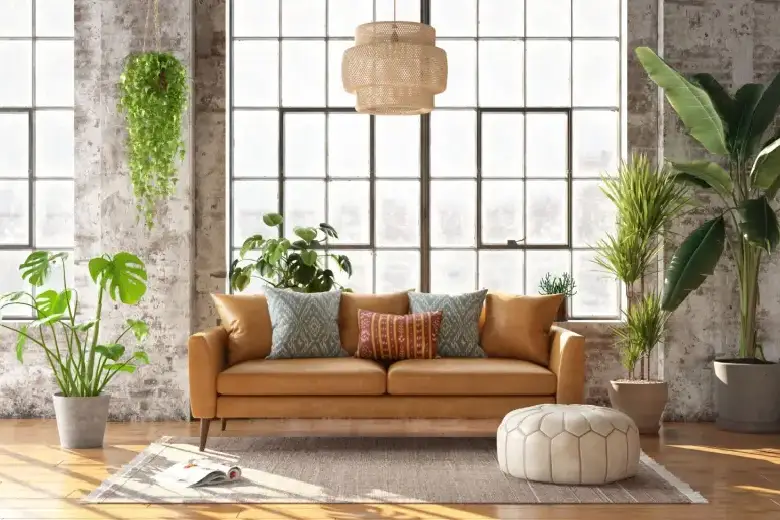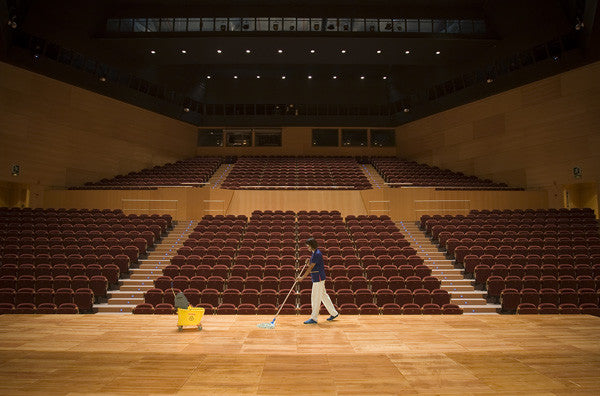
In 2025, sustainability is no longer a buzzword—it’s a lifestyle. And nowhere is this shift more visible than in the design world. From cozy homes to trendy restaurants, people are choosing pieces that look good, feel good, and do good for the planet.
Whether you’re a homeowner planning a green makeover or a restaurateur trying to reduce your business’s carbon footprint, one thing’s clear: eco-friendly furniture is no longer niche—it’s the future of design.
In this guide, we’re diving deep into the top sustainable furniture trends that are shaping both residential and hospitality spaces. Expect expert insights, practical tips, material breakdowns, and a thoughtful look at why sustainability is here to stay—not just as a trend, but as a long-term design philosophy.

Why Sustainable Furniture Matters in 2025
Sustainable furniture isn’t just about saving trees or avoiding plastic (though both are important). It’s about creating pieces that:
- Minimize environmental impact
- Last longer and reduce waste
- Support fair trade and ethical labor practices
- Use renewable or recycled materials
- Complement your aesthetic without compromising your values
In today’s world, consumers expect more from their furniture than just function or beauty—they want transparency, responsibility, and longevity.
Top Eco-Friendly Furniture Trends in Restaurants and Homes

Let’s break down the key trends that are driving the sustainable furniture movement in 2025. These styles aren’t just planet-friendly—they’re seriously stylish too.
1. Reclaimed and Recycled Materials
Best for: Tables, chairs, accent pieces, countertops
Look for: Reclaimed wood, recycled metals, repurposed glass
Furniture made from reclaimed or recycled materials gives old resources a second life—and helps reduce demand for virgin raw materials. Expect a rustic-chic aesthetic with plenty of texture and warmth.
Popular Sources:
- Barnwood tables
- Recycled aluminum stools
- Vintage glass tabletops
- Upcycled driftwood benches
2. FSC-Certified Wood
Best for: Dining tables, bed frames, shelving
Look for: FSC logo (Forest Stewardship Council certification)
Want wood furniture that’s truly sustainable? Choose pieces made from FSC-certified wood, which ensures the timber was harvested from responsibly managed forests.
Top Wood Types Used Sustainably:
- Ash
- Oak
- Maple
- Teak (certified only)
3. Modular and Multi-Use Designs

Best for: Small spaces, urban homes, modern cafes
Look for: Modular sofas, nesting tables, extendable dining sets
Less is more when it comes to sustainable living. Modular and multi-purpose furniture lets you adapt to changing needs—reducing overconsumption while adding flexibility.
Examples:
- Sectionals with removable parts
- Storage ottomans doubling as seating
- Fold-out desks for WFH spaces
4. Locally Made and Artisan-Crafted Furniture

Best for: Unique accents, statement pieces, community-focused businesses
Look for: Small-batch furniture studios, local woodworkers, regional design collectives
Choosing locally made pieces reduces the carbon footprint of shipping while supporting small businesses and local economies. It’s a win-win for style and sustainability.
Benefits:
- Lower emissions from transport
- Greater transparency
- Unique, one-of-a-kind designs
5. Natural and Low-Toxic Finishes

Best for: Families, eco-conscious restaurants, wellness spaces
Look for: Low-VOC paints, beeswax sealants, natural oils
A lot of traditional furniture uses toxic finishes or chemical-heavy glues. Sustainable pieces prioritize your health and the planet’s by using safer alternatives.
Eco-Friendly Finishes to Watch For:
- Water-based stains
- Shellac
- Tung oil
- Plant-based lacquers
6. Vintage and Secondhand Revival
Best for: Budget-friendly design, eclectic spaces, eco-conscious cafes
Look for: Thrift stores, estate sales, refurbished furniture shops
There’s nothing more sustainable than using what already exists. In 2025, vintage furniture is having a major moment—not just for the charm, but for the sustainability factor.
Ideas to Try:
- Mix eras in your dining room
- Pair mid-century chairs with modern art
- Reupholster instead of replacing
7. Biophilic Design Integration
Best for: Natural light-rich spaces, wellness-focused interiors
Look for: Organic shapes, live edge wood, furniture that blends with greenery
Biophilic design focuses on our connection to nature. Think furniture that mimics natural forms, materials that age gracefully, and layouts that promote harmony with the outdoors.
Features Include:
- Earthy color palettes
- Indoor plants built into furniture
- Furniture that uses stone, bamboo, jute
How Restaurants Are Embracing Sustainable Design
Sustainability isn’t just about food sourcing anymore. In 2025, restaurant design is going green too. More owners are embracing eco-friendly furniture that complements their ethos and appeals to conscious diners.
Top Trends in Restaurant Spaces:
- Dining tables made from reclaimed wood
- Chairs crafted from recycled plastic or biodegradable materials
- Locally sourced artisan tables and benches
- LED-lit furniture that saves energy and looks chic
- Reclaimed bar tops, industrial-chic stools with recycled steel bases
These small changes create a huge visual and environmental impact, aligning dining experiences with values-driven design.
Tips for Choosing Sustainable Furniture (Without Compromising Style)
Not all “green” furniture is created equal. Here’s how to make sure you’re really getting the sustainable deal:
✔ Check Certifications
Look for recognized labels like:
- FSC-certified wood
- Greenguard Gold (low emissions)
- OEKO-TEX® (safe textiles)
✔ Ask About Materials
Always ask what your furniture is made from, and where the materials come from.
✔ Support Ethical Brands
Choose brands that disclose their labor practices, factory conditions, and environmental impact.
✔ Focus on Longevity
Sustainable doesn’t just mean recycled—it also means durable. Look for quality craftsmanship that will last for years, not seasons.
✔ Think About End-of-Life
Can the item be recycled, passed on, or biodegraded when you’re done with it?
Table of Contents
FAQs About Eco-Friendly Furniture
Q1: Is sustainable furniture more expensive?
It can be—but you’re paying for ethical production, higher quality, and durability. Long term, it often costs less than replacing cheap furniture every few years.
Q2: What’s the most sustainable furniture material?
Bamboo, reclaimed wood, recycled metal, and organic cotton are among the top eco-friendly options. They renew quickly and leave a lower environmental footprint.
Q3: Can I make my current furniture more sustainable?
Yes! Try:
- Reupholstering instead of replacing
- Using non-toxic paints or stains
- Donating or reselling instead of trashing old items
Q4: Where can I find stylish and eco-friendly furniture brands?
Look for companies like:
- Medley Home
- VivaTerra
- West Elm (sustainable line)
- Sabai
- Etsy for custom local pieces
Final Thoughts: Sustainable Style That Lasts
At the heart of the eco-friendly furniture movement is a simple truth: design can—and should—do better. Better for the planet. Better for the people who make it. And better for the spaces we live, eat, and unwind in.
By embracing sustainability in your furniture choices, you’re not just choosing stylish pieces—you’re making a statement. You’re showing that beauty doesn’t have to come at the planet’s expense, and that great design is as much about intention as it is about aesthetics.
So whether you’re renovating your home, refreshing your restaurant, or just adding a few new pieces—remember: style and sustainability don’t have to be separate goals. In 2025, the most beautiful spaces are the ones that care..